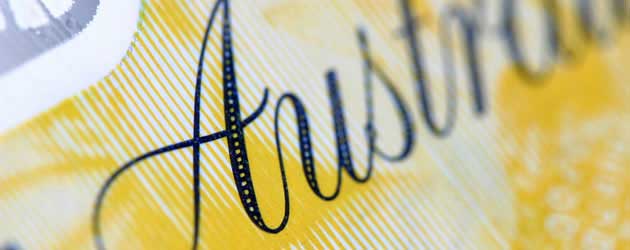
The Pound shot down by around -0.7 cents to 1.4823 (GBP/AUD) late last night as Reserve Bank of Australia Governor Glenn Stevens said that the RBA would not be cutting interest rates in the near future.
Speaking in Canberra to the Federal Parliament’s House of Representatives Standing Committee, the Australian Central Banker struck a surprisingly upbeat tone. Stevens cited three significant shifts in the global marketplace over the last six months that he felt were beneficial to the world economy as a whole.
Firstly, he mentioned that the Eurozone debt crisis has calmed down considerably from the middle of 2012, stating that the potential for “the disintegration of the Euro has abated” since ECB President Mario Draghi’s bold pledge to support the single currency no matter what.
Secondly, he said that “some of the headwinds for the US economy are subsiding, the housing market seems to have turned, for example”. Commenting that as long as US leaders handle fiscal issues appropriately then America should deliver relatively strong growth this year.
Thirdly, he suggested that although the larger net size of the Chinese economy means that growth will be “less hectic” in the future, “the slowdown in China’s economy has come to an end”.
The RBA Governor went on to state that Australia is currently running a trade surplus that is 50% higher than the 20th Century average.
Over the last 16 months the cash rate has been reduced six times, by a grand total of 175 basis points to 3.00%, and some investors were expectant of more cuts in order to foster growth in the wake of a slowdown in Australia’s lucrative mining industry.
However, Stevens appeared to rule out the possibility of a further rate reduction in the near future when he said: “I feel we are at the appropriate level right now, there’s plenty of stimulus in the pipeline”.
The news means that the yield on Australian Dollar denominated assets will remain considerably higher than those denominated in Sterling, and this sent GBP/AUD plummeting by -0.7 cents.
The ‘Aussie’ hit a 6-month high of 1.4782 on Thursday morning as markets reacted to the increased probability that the Bank of England will introduce more quantitative easing measures over the next few months, in light of February’s extremely dovish Minutes Report. However, the Pound managed to claw back some of its losses as traders reacted to a positive set of UK Public Sector Borrowing figures.
In response to the RBA’s optimistic rhetoric, the Australian Dollar gained half a cent against the US Dollar (AUD/USD), 0.4 cents against the Japanese Yen (AUD/JPY), 0.4 cents against the New Zealand Dollar (AUD/NZD), 0.4 cents against the Euro (AUD/EUR), and 0.45 cents against the Canadian Dollar (AUD/CAD).

Comments are closed.